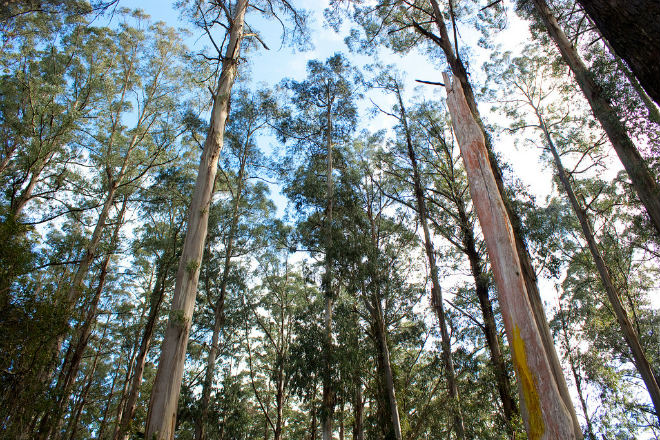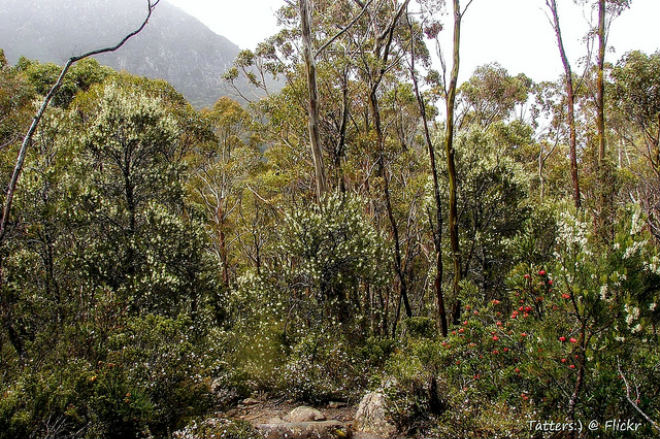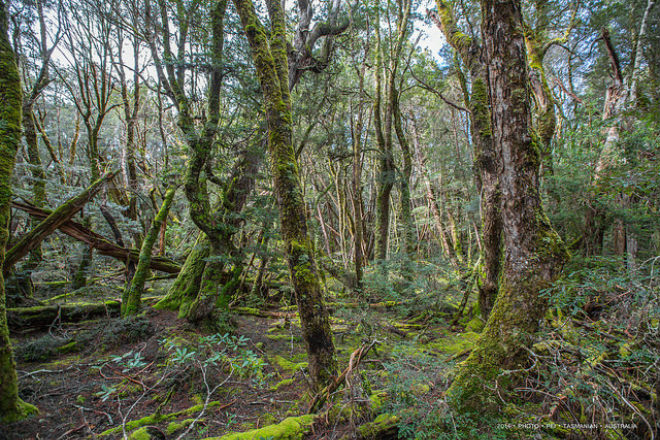Why Are Tasmania’s Most Untouched Forests Getting Green-Lit For Development?
It's not a "wilderness" if you build a resort in the middle of it.

“One of the last expanses of temperate rainforest in the world.” That’s how UNESCO describes the 1.58 million hectare Tasmanian Wilderness World Heritage Area (TWWHA) comprising the Cradle Mountain, Franklin-Gordon Wild Rivers and Southwest National Parks in the island’s south-west; one of the three largest temperate wilderness areas remaining in the Southern Hemisphere. If UNESCO are to be believed, the area is one of immense and irreplaceable importance — a window into our wild world as it once was, an environment which squashes the ego to make us feel no larger than a speck of sand.

(Image via Rexness on a Flickr Creative Commons licence.)
Strange, then, that Tasmanian Premier Will Hodgman would go so against the grain when he announced two weeks ago that the state Liberal government is planning on rezoning most of the area from “wilderness” to “remote recreation.” This rezoning will likely facilitate commercial tourism developments like hotels, cruise ship berths and landing strips for planes and helicopters. Already the state government is considering thirty seven expressions of interest from companies interested in developing within the wilderness area. Also referred to in the plan is the allowing of “extraction of speciality timbers” which, translated from government-ese, simply means logging.
It’s not the only example of an Australian wilderness area being compromised for business interests — the Great Barrier Reef is now at risk of being just another worn out, bleached reef like many others around the world because of increasing coal exports from the ports of Gladstone and Abbot Point. In 2012, 3950 ships entered these Great Barrier Reef ports. On top of this federal Environment Minister Greg Hunt initially approved the dumping of three million cubic metres of spoil from the Abbot Point coal expansion terminal onto the Reef, before changing his mind after much public outcry. In both situations, there’s a great risk of a wilderness area becoming a “wilderness” area, with all environmental considerations that impinge on the bottom line brushed aside.
–
Sincere Motives?
The Tasmanian government claims it is driven by cultural and environmental motives. They say the term ‘wilderness’ is deeply problematic for Aboriginal people as it “implies a landscape empty of human culture.” The guiding vision of the plan, they say, is to conserve the national heritage and other natural and cultural values of the TWWHA and to “transmit that heritage to future generations in as good or better condition than present.”
But how sincere are these motivations? After all, they do seem at odds with the government’s reputation since being elected last year. First there was the attempt to delist – and make available for logging – 74,000 hectares of forest from the world heritage area which was rejected by the United Nations after less than ten minutes of deliberation. Then came the axing of the historical peace deal between environmentalists and loggers, a move which removed 400,000 hectares of forest from reserve. Still ongoing is the government’s attempt to reopen 90 kilometres of four-wheel-drive tracks in the Tarkine region which were closed in 2012 after an official report found four-wheel-drive use was causing damage to heritage-listed Aboriginal sites.

(Image via Tatters on a Flickr Creative Commons licence.)
Were it not for this history, perhaps the government’s claim that they’re fair dinkum about protecting the wilderness via the strictest guidelines for only sustainable developments could be believed. With their record, though, it seems all the government’s comforting rhetoric might be a mere masquerade for commercial goals that are driving the draft plan, which reads more like a blatant act of aggression in the ongoing environmental war which has held Tasmania back for so long.
According to the plan, “development of infrastructure, resourcing of management presence, creation of appropriate commercial opportunities and provision of opportunities” should be given priority. How all that will affect the environment which visitors are coming to experience is of a lesser concern. What’s more is that the area open for ‘speciality timber logging’ in the new plan is the same as that which was proposed for delisting last year. That seems as much of a coincidence as a block of chocolate tasting like chocolate. And then there’s the fact the Tasmanian Aboriginal Corporation was denied a request to even see a draft of the plan.
–
Wilderness With Training Wheels
The government lists fire, climate change and incursions by invasive species as the major threats to the TWWHA. That Mr Hodgman or his party haven’t realised the irony of this could be the topic of a great comedy skit were it not so worrying. Commercial tourism developments in the TWWHA may reap profit by attracting more tourists but they will rip the ‘wilderness’ name tag right off Tasmania’s breast. Mr Hodgman must have been confused when he said of the draft plan that “we must make it easier for visitors and locals to access our wilderness areas and make the most of these natural experiences,” for areas quickly cease being wild once they are as easily accessible as his plan is proposing.
It’s a myth that only those with Olympic-level fitness can visit Tasmania’s natural wonders. Already around the island are tourism spots not as rugged and wild as the south-west which are more open to tourists with time or physical constraints. There’s the Big Tree Reserve in the Styx Valley, the Mt Field National Park, or the Maria Island trek which offers permanent hut accommodation with the comforts of sheltered candle-light dinners.
These are important for a sustainable tourism industry, but so are those pure, wild regions of the south-west which offer a more intense natural experience where trekkers must fend for themselves against the elements and are fully immersed in the natural world. This diversity needs to be ensured. If not, it’s likely the TWWHA will become like many other areas and lose the very thing that makes it worthy of world-heritage status. Must every area of the wild world be tamed?

(Image via Wang Hsin-Pei on a Flickr Creative Commons licence.)
Those who visit the south-west if the government’s plan proceeds will be tricked into believing they have felt what being in the wilderness is like. Sure, arriving to an air-conditioned and wi-fi equipped hut or hotel via sea plane, then sitting on the verandah, cocktail in hand, with a splendid view of Tasmanian rainforest may be pleasant, but it’s a far cry from feeling what the wilderness really is. It’s a pseudo-wilderness experience, much like riding a bike with training wheels on.
Being in the untouched wild is about feeling small, powerless and insignificant as humans. It humbles us. The south-west wilderness of Tasmania does this. Indeed, it’s one of a limited number of places in Australia which can do this. For this alone, it should treasured and protected as a priceless jewel to the country and the world. Instead, like the Great Barrier Reef, its wilderness status is being threatened by greed.
What’s needed in Tasmania and in other wild areas around Australia isn’t another hotel, hut or recreational park. What’s needed is more respect for an environment seen nowhere else on the planet, whose value is greater than any figure with a dollar sign in front of it, and that will never recover once wounded.
–
Drew Rooke is a freelance writer from Sydney, Australia, with an interest in national affairs and contemporary culture.
–
Feature image via H.K. Colin on a Flickr Creative Commons licence.